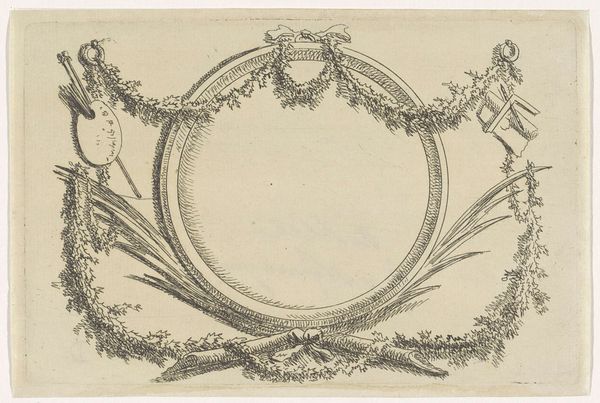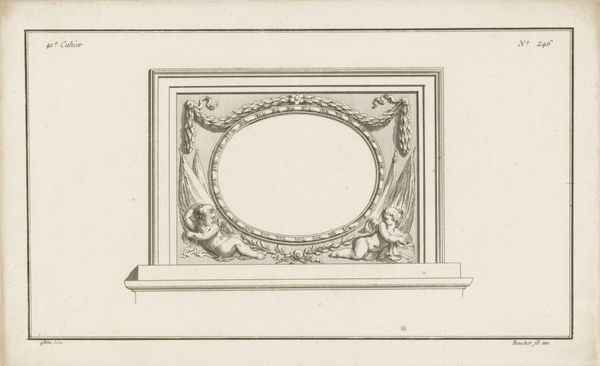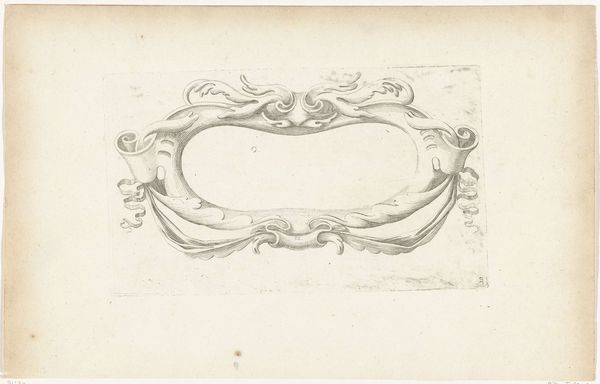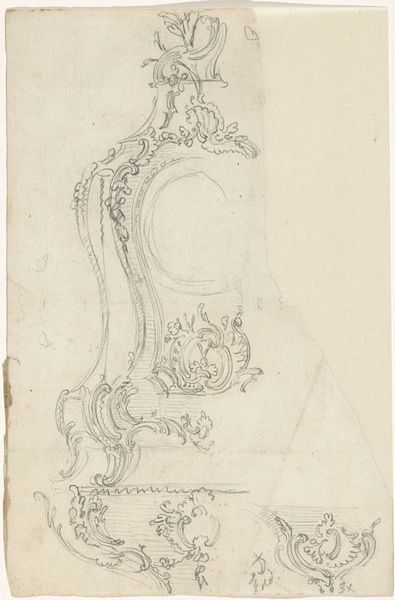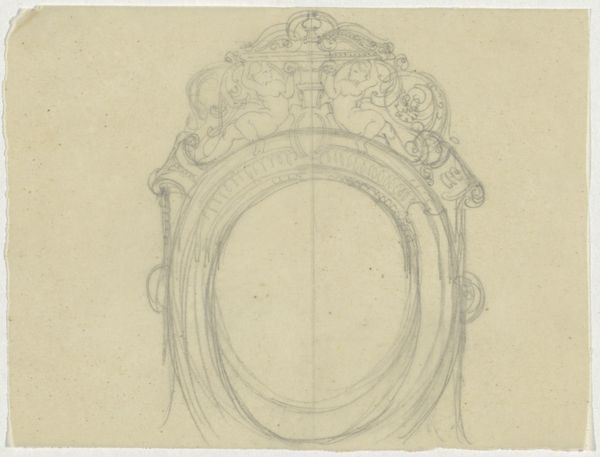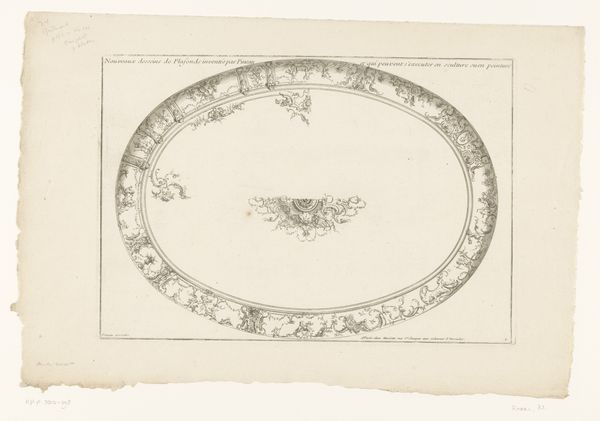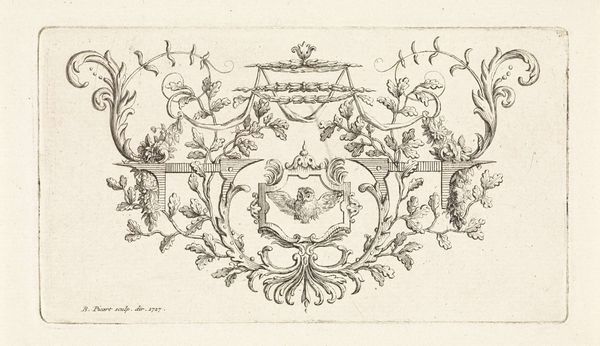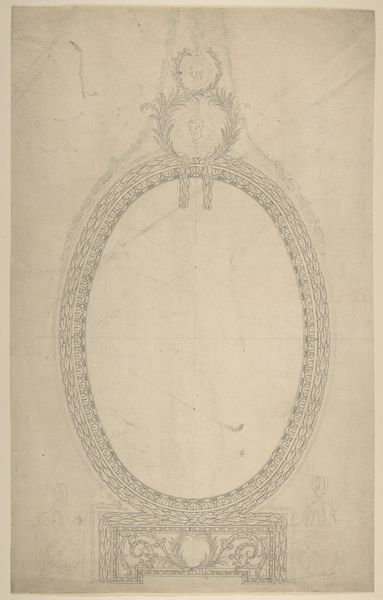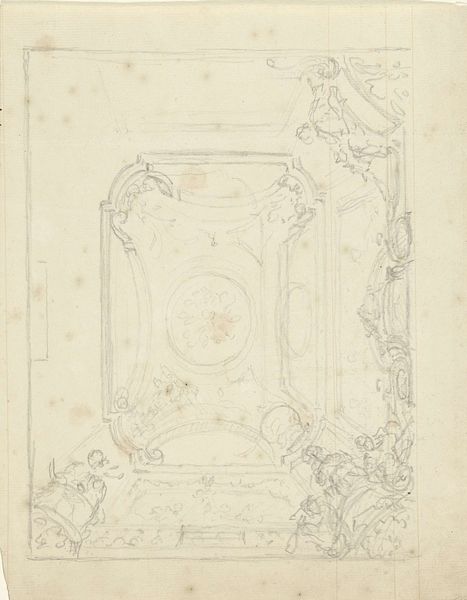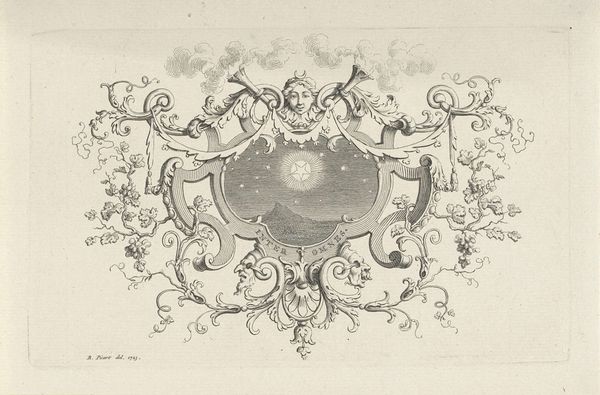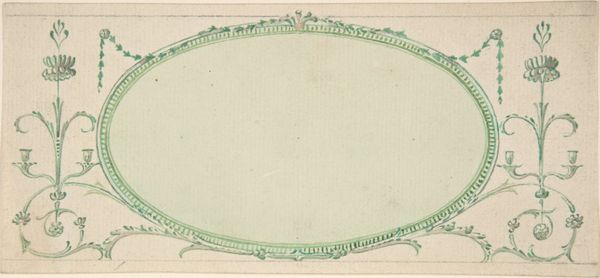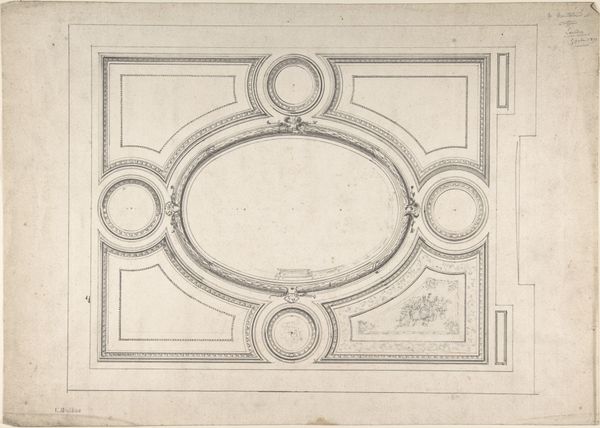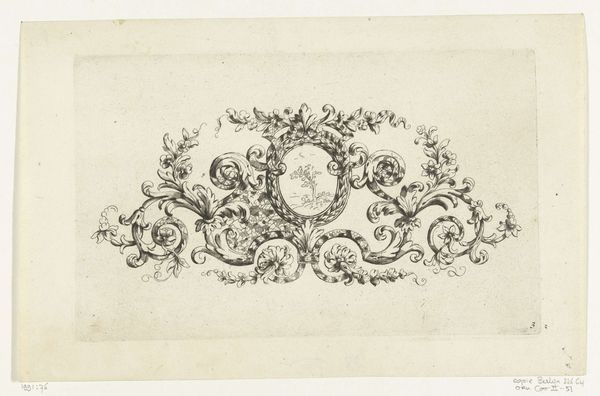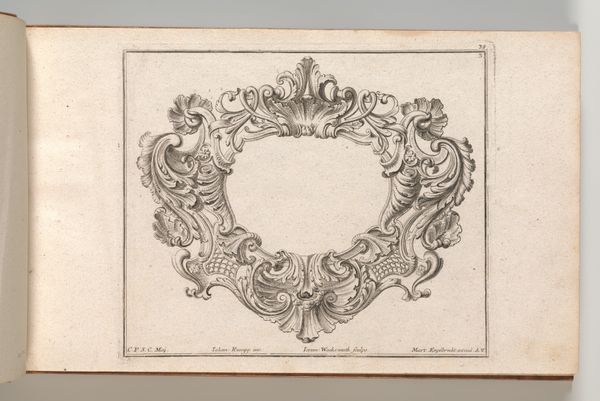
drawing, print, etching, engraving
#
drawing
# print
#
etching
#
old engraving style
#
etching
#
geometric
#
line
#
decorative-art
#
engraving
Dimensions: height 109 mm, width 160 mm
Copyright: Rijks Museum: Open Domain
Curator: The piece before us, attributed to Gerard van Nijmegen and titled "Ornamentele omlijsting," appears to be a drawing or print—an etching, specifically— dating sometime between 1745 and 1808. What are your first impressions? Editor: A delicate line drawing! Almost ghostly in its lightness. The composition centers around a void framed by decorative flourishes—garlands, ribbons, some sort of weaponry— suggesting a space waiting to be filled, a statement to be made. Curator: Indeed. I’m intrigued by how Nijmegen employs the etching technique. Consider the labor involved in creating such fine, consistent lines over the copper plate. This wasn't simply about aesthetic decoration. Prints like these circulated widely, weren’t they? Editor: Absolutely. This decorative style speaks to a vibrant print culture, fueling not just art, but architecture, furniture design, even fashion. The ornament itself becomes a commodity, reproducible and democratized. I wonder about its use. Perhaps an engraver’s model book for mass consumption by artisans? Curator: Precisely. Examining the materials themselves is instructive—the paper's weave, the ink's subtle sheen. These details underscore the skill required, a level of artistry we might easily overlook when we see only the image and not the labor behind it. I can appreciate it now knowing it's at the Rijksmuseum. Editor: I agree. Seeing this design now, presented as high art in a major museum setting prompts interesting questions about how these historical frameworks affect how we understand what’s actually on display, and if we take this work to mean more as a result. It strikes me as a bit of an empty signifier awaiting meaning to be imposed upon it, so the museum has certainly provided a starting point for a better understanding. Curator: Exactly. So much is interwoven: materials, technique, social purpose... The frame anticipates content. Editor: Ultimately it offers a potent reminder that art exists, and existed, for all stratospheres of culture. Curator: A fitting way to frame our own view.
Comments
No comments
Be the first to comment and join the conversation on the ultimate creative platform.
